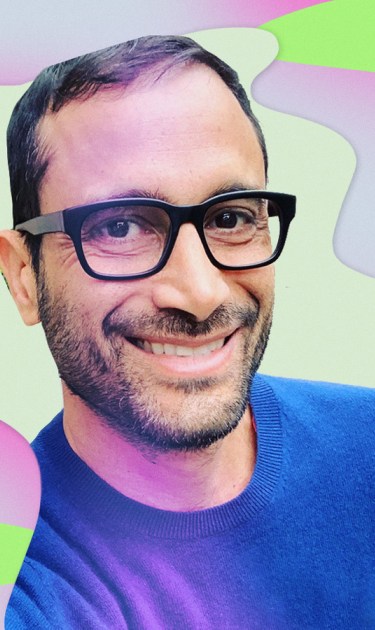Final girls are a narrative trope in horror movies and the subjects of artist Daniel Handal’s most recent eponymous series. Though watching the final girl ultimately crush her murderous tormentor is cathartic for some of us as viewers, the 50-year-old artist transcends our campy empathy by reimagining these nostalgia-tinged staples of ‘80s slashers as empowering figures.
Portraying them in moments of richly colored composure as opposed to blood splatter, Handal conceives of his bond with these survivor-heroines as a sort of sisterhood. “I relate to the feeling of being a little scared and wondering, ‘how do I overcome this?’” he tells Remezcla of grappling with his sexuality while growing up in Tegucigalpa, Honduras, “I was thinking about how to overcome homophobia and even my own doubts about myself.”
Listening to him describe his subjects—from the bold songbirds in his Pajaritos series to Jamie Lee Curtis in Halloween—brings the phrase ‘unflinching optimism’ to mind at first. Yet, this idea that optimism and flinching cannot coexist is kind of annoying, no? Handal’s art conveys how vibrant hopefulness in the wake of facing demons is even more powerful.
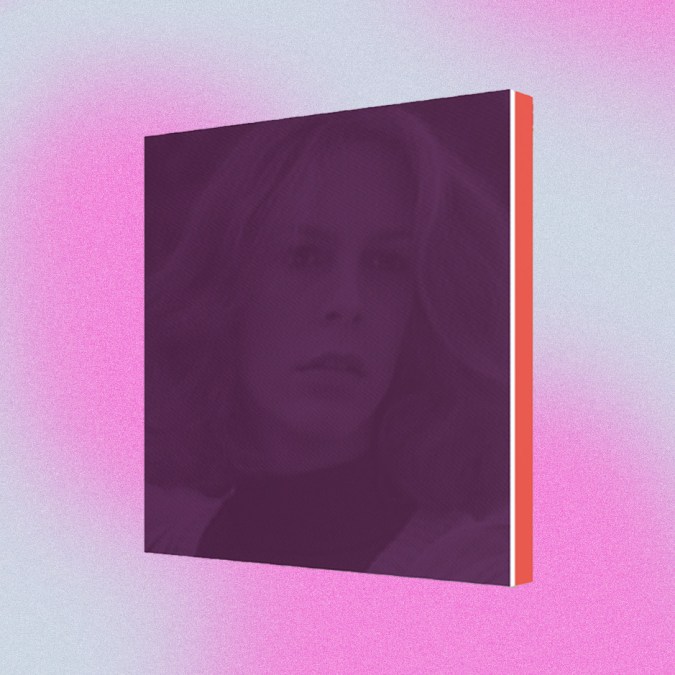
On the slushy streets of NYC, far from the terrible places where final girls find themselves, Handal met Remezcla at the ClampArt gallery in Chelsea to walk us through his exhibition, “Final Girls and Other Works,” in this Creating in Crisis conversation.
What was your process in making Final Girls? Did you make them all in a certain period of time or more in spurts? How did you choose which images to screen print?
I’ve been thinking about this project for around 5 years, and I made these works in spurts. I knew I wanted it to have something to do with this film trope of final girls, and then I realized I wanted to use recycled imagery. I did a Google search, and then my Google result would come up with images. For newer or more popular movies, I might get 30 images. I knew what size I wanted them to be, so I would crop them to those dimensions and see which images I responded to. Most of their eyes have a shimmer. Even though final girls are a film trope, they go through this huge battle between good and evil and finally come out victorious. So, I wanted to show them looking out onto the horizon.
Because I was already taking images from a different source, I wanted to do something that required a lot of skill. I started experimenting by painting the sides and realized that an interesting twist…would be to use a different color to create a contrast. People used to talk about the line being the smart, masculine part of a painting, and the color is feminine. Here, I’ve gotten rid of [hard] lines so that in abstraction it becomes all about color.
I have to define it in my head and say, ‘This is what the world looks like.’
I need some sort of parameter when I work on a project because I have to define it in my head and say, ‘This is what the world looks like.’ Then, there’s research, and colors come in and inform the work. Then, I start understanding why the idea was interesting to me in the first place, and then I want to make it interesting to other people.
[There are] really two ideas that I’m combining—there’s the film trope, and there’s color. The color is not tied to the character, but it’s not random. What I want to do is connect each color with something that I’ve looked at, and it’s a way for me to embed the final girl with new meaning. I wouldn’t look at a character and say, ‘Oh, she has to be this type of blue,’ but, this image for example reminds me of the Virgin Mary, and blue is often used to depict her.
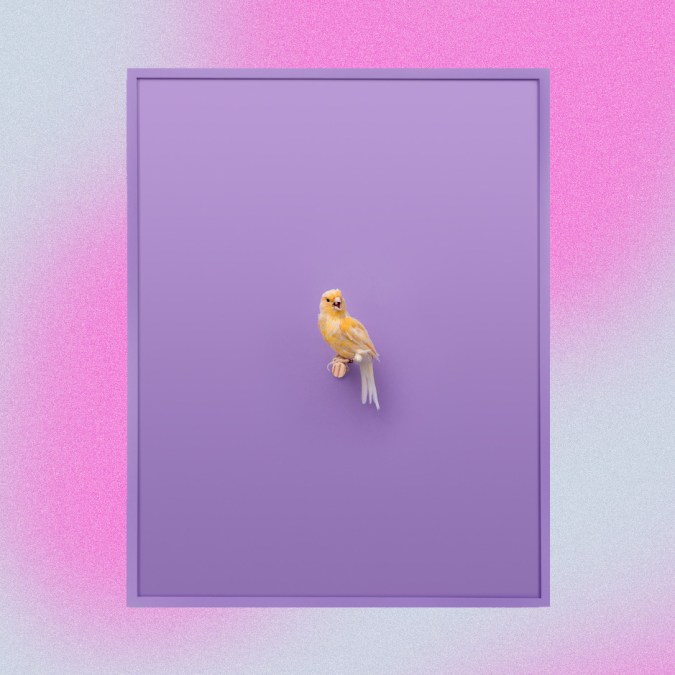
In a recent exhibition talk, you discussed how Catholicism has influenced some of your earlier projects. Do you see a common thread in how catholic visual culture manifests across your work?
A lot of my work has to do with looking at the world and wanting to talk about beauty and more difficult things through art but kind of not knowing how. I grew up in Honduras, and I came [to the U.S.] for college and got an engineering degree. Even though I didn’t go to art school, I was able to take some studio courses and some liberal arts classes, and I just fell in love with it. I figured it would be easier to stay here if I pursued a technical degree, so I worked as an engineer for about a year. It was later in life when I realized [art] is what I want to do… and that’s become an undertone in a lot of my work.
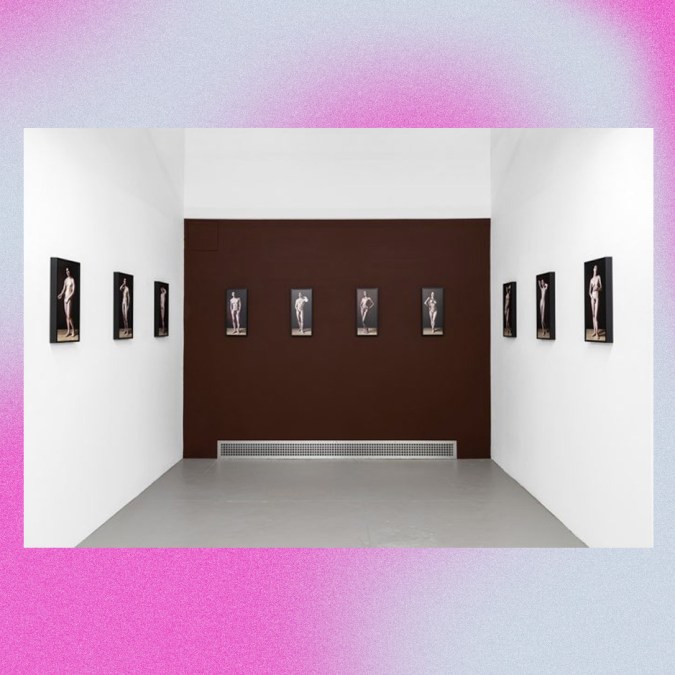
Anything that I do will be associated with my upbringing. Have you seen the alfombras during Semana Santa? That’s my culture. I have a friend who came to the exhibition and said he was more attracted to the muted colors of the [Cranach Nudes] project because he’s a WASP [White Anglo-Saxon Protestants] and has this WASP-y sensibility. He was joking, of course, but I think there’s something to be said about that. Across Latin America, there are neighborhoods where all the houses are painted in many different colors, and how you value color is so important. This project has a Catholic sensibility because it is so colorful.
Across Latin America… how you value color is so important.
COVID-19 has shifted our relationship with fear. Watching horror movies, for example; definitely does not feel the same right now when we’re a little scared walking out of the house. Did putting together an exhibition during the pandemic affect how you displayed the Final Girls, who represent these (sub)genres?
One of the things we like about horror is that we know it’s not real, and part of its thrill is that it’s not supposed to be too serious. Today, we watch the news and hear about something as enormous as climate and share all this information on social media—it just feels overwhelming at times.
I started the project working with black and white and grey, and the [canvases] were smaller. During the shutdown, I decided that I wanted the colors to be as bright as possible. We all need beautiful and colorful and bright things in our lives.
Being able to see this now is very special…when I see this room, I think, ‘Look at all these soldiers,’ and I like that they have very powerful feminine energy.
The final girl is sort of an outsider. She usually dresses boyish and doesn’t participate in sex in the same way as her peers. I feel like this project is just right for the time, because it’s not just about overcoming challenges. It’s about the challenges that we have, when we’re a little different—when we’re queer or from Latin America or a woman or young… Anything that makes you sort of different from the rest.
One thing I found challenging was that there weren’t a lot of Black final girls. I’d go to these corners of the Internet in my research, and there would be these really intense, racist debates saying, “Oh! She’s not a real final girl.”
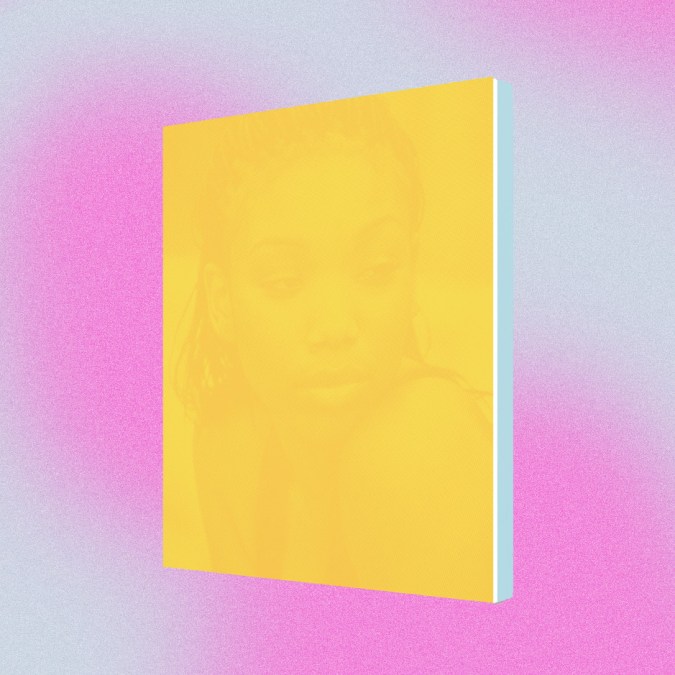
Nikole Hannah-Jones of the 1619 Project captured the pushback against the construction of Latinidad in this tweet where she writes, “Latino is a contrived ethnic category that artificially lumps white Cubans with Black Puerto Ricans and Indigenous Guatemalans.” Considering the “Latin American art” wings in museums or collectors who represent Latinx artists, what do you think these debates about Latinidad mean for the art world? How do you feel about that classification?
Once you start trying to define something in one way, you take a step to the side, and it doesn’t look the same anymore from a different angle. Grouping can help us describe work and explain why it’s made a certain way… but it’s also helpful to keep an open mind. I don’t always want it to be so clear, where you walk up to a piece of art and say, ‘Oh this is Latinx art.’
So, there are categories, but I try not to get trapped in them, because I am who I am, and I’m just trying to make my work better. This dialogue helps us talk about work. Then, we can figure out if it’s something that helps us or makes us happier or if we want to live without it… The world we live in now, actually values interdisciplinary sorts of backgrounds.
I don’t always want it to be so clear, where you walk up to a piece of art and say, ‘Oh this is Latinx art.’
It often feels like I’m looking at the world from the outside, and it’s just a shift in perspective to recognize that what I think and see is valid, right? So, if I see something in culture, then I should follow through with that idea and see what that looks like. For example, my Pajaritos project has to do with me embracing queer culture, but you may not see that at all.
Learning that Pajaritos is in part about reclaiming this derogatory term for gay men, “pájaro” may really change how you view it. Of course, you want the observer to have an organic response to your work and not have it be so literal, but do you worry about folks being able to grasp the subtext?
More and more, I want my work to be like a puzzle—to be something you look at, and then you do a double-take. I want you to stop and think, ‘why isn’t the bird the size of the frame?’ ‘why is there so much color around it?’ There are a couple of reasons for that. The bird is the actual size of the bird, but it’s not just a picture of a bird—it’s about me celebrating queerness after many years of struggle. [The pajaritos] are precious, meticulous, or small. And, I hate talking about gender this way because it reinforces horrible stereotypes, but, sometimes, I want to make work that people will assume was made by a woman to mess with the [binary]. We look at work with these ideas about gender in our head, and I want to reverse it.
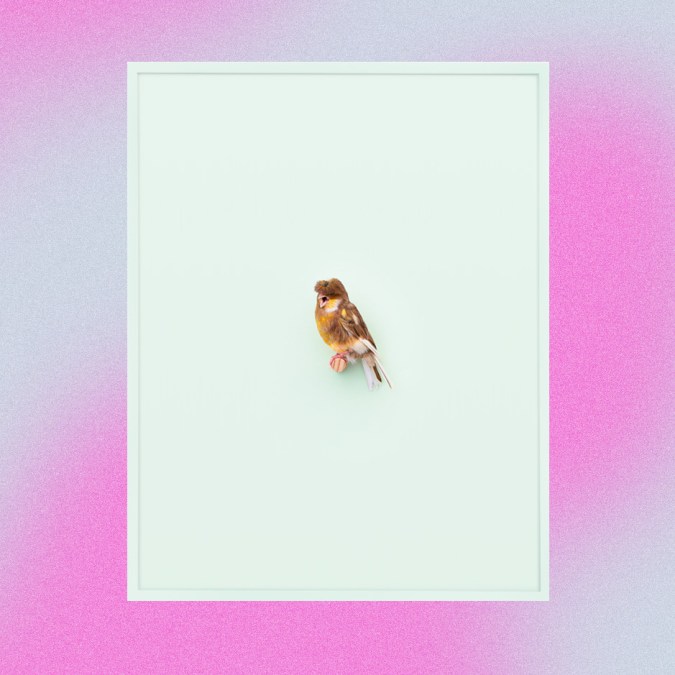
[For Final Girls], I didn’t want to say, ‘Okay—this is what this means!’ but what I am saying is that there are these films where women are the heroes, and they overcome great struggles and conquer evil. The trope started off very misogynistic…now these characters aren’t so virginal and have more agency.
It says something interesting about our culture that we create these stories. Culture happens, right? Then, 20 years later, culture revisits. I read somewhere that the reason that happens is that creative people are at an age where we’ve spent some time honing our skills… My experiences in the ‘80s and ‘90s are something that I have been interested in my entire life, but what happens now is that I have an exhibition. So, other people from my generation are showing their work, and we’re all talking about our experiences because—usually—those years when you’re growing up are formative.
What was the biggest challenge in exhibiting art right now?
People are very distracted by what’s going on in their lives right now, so I haven’t been able to really engage with an audience. I was nervous when the gallery and I talked about doing this in November and December, but I’ve wanted to do this project for so long that I had to take that leap of faith and move forward. [ClampArt] and I were just excited to be able to put this together during a very difficult time, and working towards something has its own satisfaction.
I also wanted to move on to other projects. I’m not working on anything right now because I feel like I’ve been running a marathon, and it just feels good to not be obsessed with an idea. One thing that I’m thinking about has to do with a collaborative effort with my mom. She’s a creative person, and a lot of my creativity comes from her.
